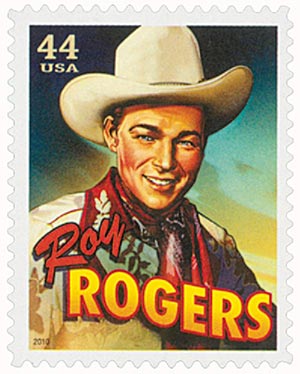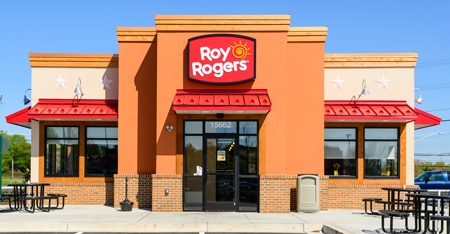“Some trails are happy ones
Others are blue
It’s the way you ride the trail that counts
Here’s a happy one for you” – Happy Trails (Dale Evans) © Sony/ATV Music

Roy Rogers was born as Leonard Franklin Slye on November 5, 1911, in Cincinnati, Ohio. The son of Mattie and Andrew “Andy” Slye, “Len” lived with his family in a tenement on 2nd Street, where Riverfront Stadium would later be built (Rogers was known to joke that he was born at second base).
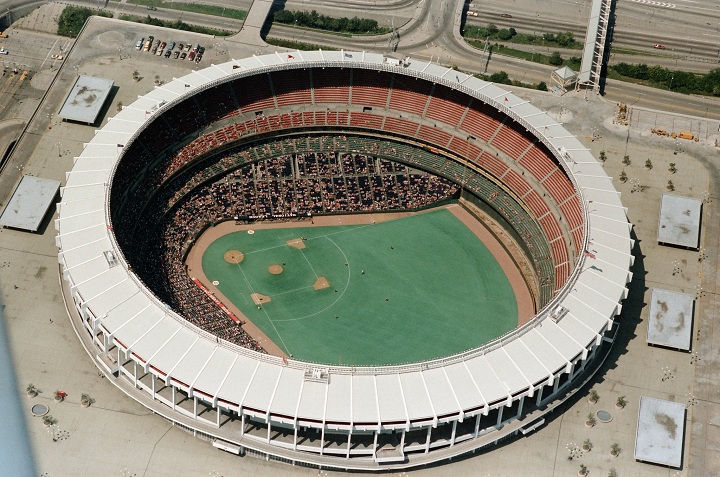
In 1912, Andy Slye became disenchanted with city life and along with his brother Will, built a 12-by-50-foot houseboat, upon which the Slye family traveled up the Ohio River towards Portsmouth. There, Andy purchased a piece of land where he intended to build them a home, but the Great Flood of 1913 allowed them to move the houseboat onto their lot, where they were able to continue living aboard the boat on dry land.
In 1919, the Slye family purchased a farm at Duck Run, near Lucasville, Ohio, where they built a six-room house. Realizing that farm work alone would not support his family, Andy Slye soon took a job at a Portsmouth shoe factory, staying in the city during the week, then returning to his family on the weekends. Often he would arrive at the farm after payday, with gifts for his family. One of those gifts was a horse, on which young Len learned the basics of horsemanship.

Being isolated on their farm with no radio, it was up to the family to create their own entertainment. On many Saturday nights, they would invite their neighbors over for get-togethers, where Len would sing, play mandolin, and call square dances. He also learned to yodel, and often he and his mother would use different yodels to communicate with each other on the farm.
After completing two years of high school, Len could see that his family needed financial help, and he quit school to work with his father in the shoe factory.
By 1929, Len’s older sister Mary and her husband had moved to Lawndale, California, a short distance south of Los Angeles. By the spring of 1930, Len and the rest of the Slye family followed Mary, renting a house not far away. Len and his father then found work driving trucks for a gravel company.
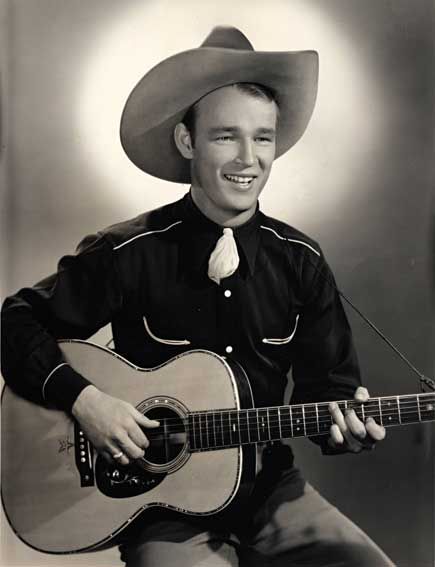
In 1931, at the encouragement of his sister Mary, and wearing a Western shirt that she had sewn for him, Len auditioned for the Midnight Frolic radio program, broadcast by KMCS in Inglewood. A few days after his appearance on the show, he was asked to join a local country music group, the Rocky Mountaineers. He remained with the group a few months before leaving to form another musical group.
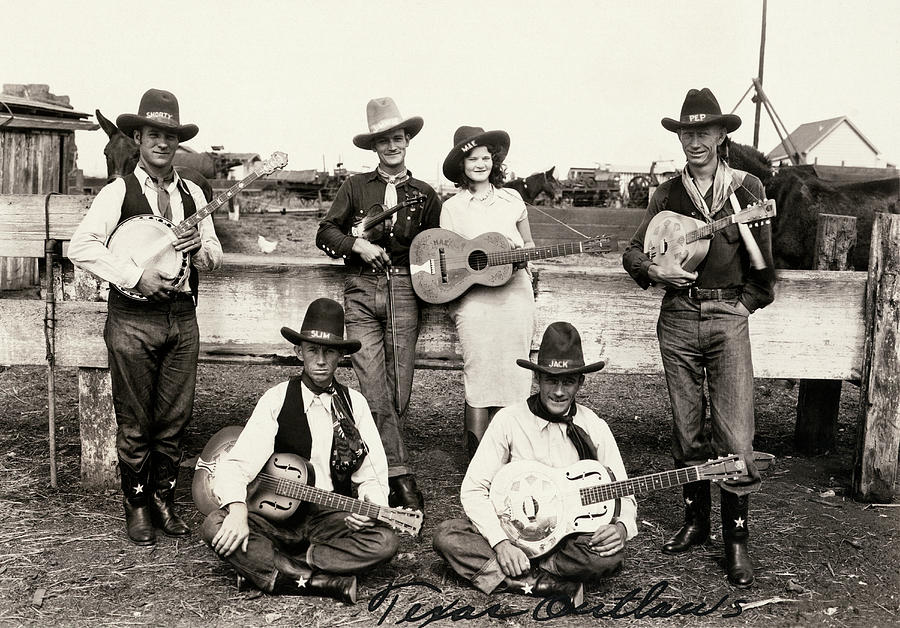
Through 1932, Len performed with a succession of groups before joining Jack LeFevre and His Texas Outlaws, who were popular on a local Los Angeles radio station. In 1933, while continuing to perform with the radio singing group, Len formed The Pioneers Trio, with himself as guitarist, along with a bassist and a lead vocalist. The group began writing original material, rehearsing vocal arrangements, and eventually added a fiddle player, who also sang bass. As they were no longer a trio, their name was soon changed to The Sons of the Pioneers.
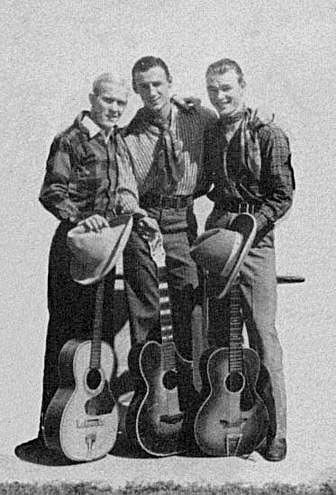
By the summer of 1934, The Sons of the Pioneers had gone from being known locally and throughout the greater Los Angeles area, to having a national following, due to syndicated radio spots that were later rebroadcast across the country. In the summer of ’34, the group signed a contract with the newly formed Decca Records label, and over the next two years would record 32 songs for the label, including the classics, “Cool Water” and “Tumbling Tumbleweeds”.
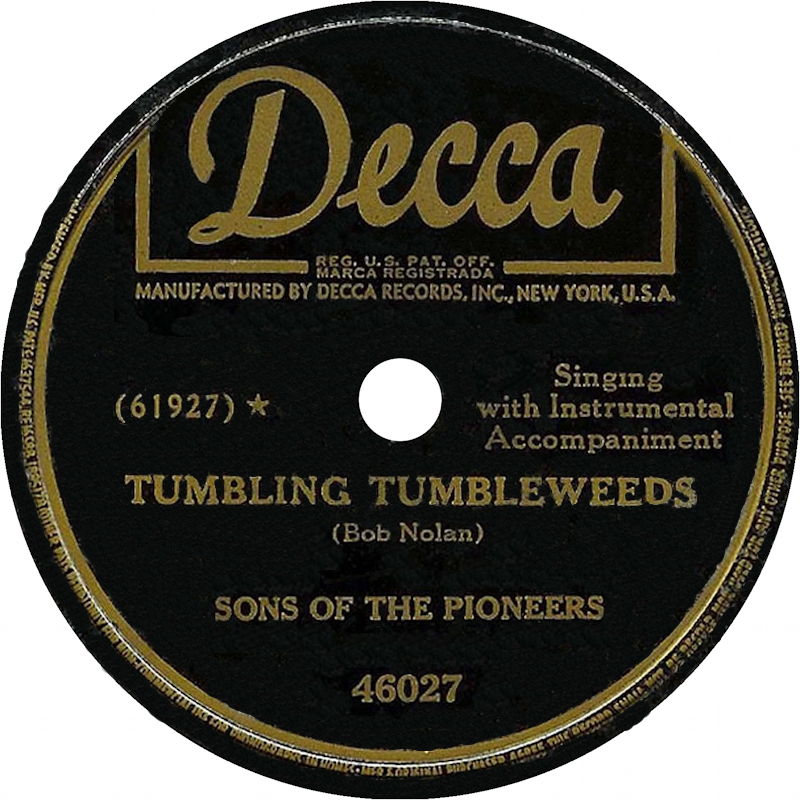
“Oh, and Roy Rogers is riding tonight
Returning to our silver screens
Comic book characters never grow old
Evergreen heroes whose stories were told
Oh the great sequin cowboy who sings of the plains
Of roundups and rustlers and home on the range
Turn on the TV, shut out the lights
Roy Rogers is riding tonight” – Roy Rogers (Elton John/Bernie Taupin)
Len Slye began making Western films in 1935, including taking on a large supporting role as a singing cowboy, in a film starring Gene Autry, while still performing under his own name. In 1938, Gene Autry began demanding more money for the films he appeared in, and there was competition to find a new singing cowboy. That role was eventually won by Slye, and soon Republic Pictures had given him the name of Roy Rogers, believing that it was a more Western sounding name.
“I’ve been living in a Roy Roger’s song
Something ’bout where my heart belongs
My horse and I will never give in
We’ll ride away in a western wind” – City Boy’s Dream (Adam Gregory)
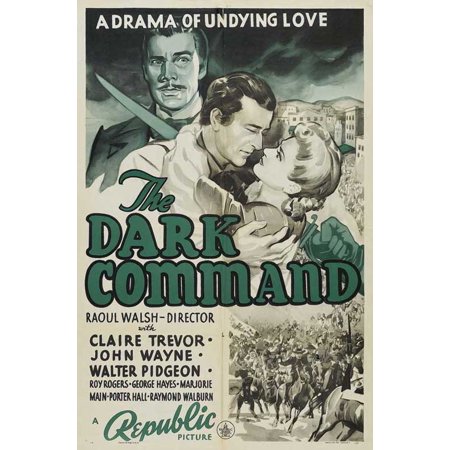
The newly christened Roy Rogers began starring in his own films, in direct competition with Gene Autry, but also took co-starring roles, such as in the John Wayne film, Dark Command, where he appeared with one of his future sidekicks, George “Gabby” Hayes. Rogers was soon a major box-office attraction, and as such, most of his roles allowed him to play a character with his own name, much like Gene Autry.
“I remember wearin’ straight leg Levis
Flannel shirts even when they weren’t in style
I remember singin’ with Roy Rogers
At the movies when the West was really wild” – I Was Country When Country Wasn’t Cool (Morgan / Fleming)
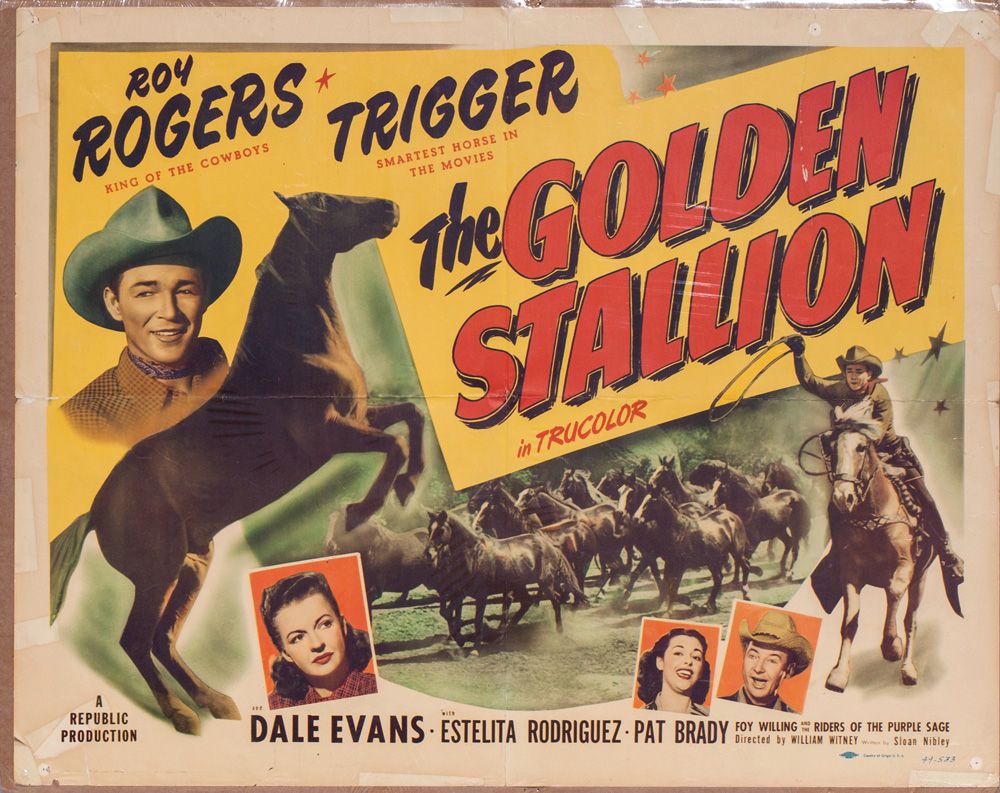
In the Motion Picture Herald Top Ten Money-Making Western Stars poll, Rogers was listed for 16 consecutive years, from 1939 to 1954. Originally ranking in second place, behind Gene Autry, he held the top spot beginning in 1943, when Autry left the business to enlist in the military and held that spot until 1954 when the poll ceased. In 1945 and 1946, Rogers also appeared in the Top Ten Money-Making Stars Poll for all films.
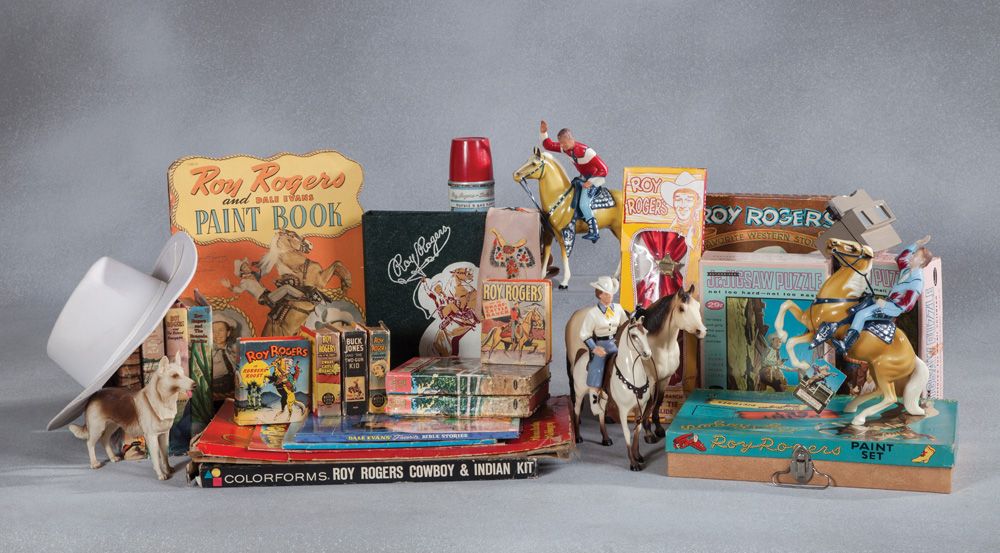
In 1940, Rogers added a clause to his contract with Republic Pictures, in which he retained the rights to his likeness, his voice, and his name for merchandising purposes. Roy Rogers and his golden Palomino, Trigger, were soon featured as action figures, in adventure novels, in comic books, on lunch boxes, games, and just about anything else you could imagine. These products were mainly marketed to children, and young adults and Rogers was very protective of his image. For a period, Rogers was second only to Walt Disney in the number of items featuring his name.

“For a while, I stood there on the sidewalk
A Roy Rogers lunch pail in my hand
Then I heard sweet children’s voices calling
And I began to understand” – Four Eyes (Randy Newman)
Although Roy Rogers had met Dale Evans (born Lucille Wood Smith, her name was changed to Frances Octavia Smith while she was still an infant. ) in 1944, when they were cast to star in a film together, they did not fall in love until months after Rogers’ second wife, Grace, died of complications from childbirth in November of 1946. Rogers & Evans would marry on New Year’s Eve, 1947, at the Flying L Ranch in Davis, Oklahoma, where they had filmed Home in Oklahoma several months earlier. Although it was the 3rd marriage for Rogers, and the 4th for Evans, they would remain married for 50 yrs, until Rogers’ death in 1998. Together they would have nine children, including offspring from their previous marriages, and four adopted children.
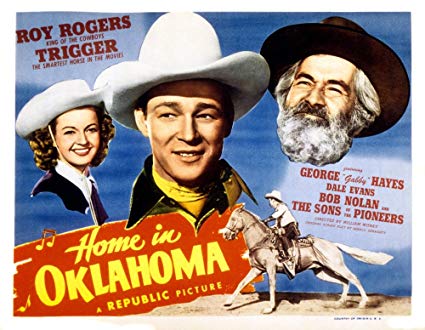
“Now if I were Roy Rogers
I’d, sure enough, be single
I couldn’t bring myself to marrying old Dale
It’d just be me and Trigger
We’d go ridin’ through them movies
And we’d buy a boat and on the sea, we’d sail” – If I Had a Boat (Lyle Lovett)
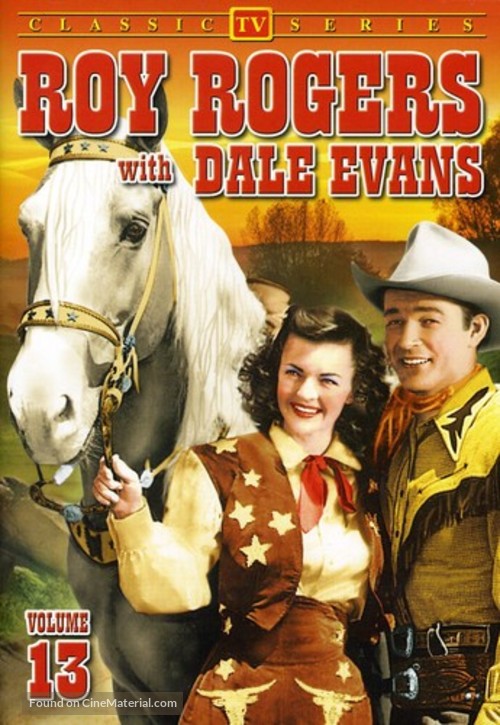
The Roy Rogers Show ran for 100 episodes on NBC, from 1951 through 1957, and featured Roy’s horse, Trigger, Dale’s horse, Buttermilk, and the couple’s German shepherd, Bullet. The show’s theme song, “Happy Trails,” was written by Dale Evans and sung by the couple as the credits rolled at the end of each episode. The show can still be viewed today via cable outlets.
During his performing career, Roy Rogers made more than 100 films, appeared in more than 100 TV episodes, appeared on radio and made dozens of musical recordings. He owned a production company that produced his show, as well as other TV shows. He licensed his name to the Marriot Corporation to use on their chain of “Roy Rogers” restaurants. He was a Freemason and belonged to the Al Malaikah Shrine Temple.
“In Nineteen Sixty Seven the draft caught up with me
Me and my pal Joe went off to war
We might find hero’s heaven, but we’d keep the country free
We would surely win just like before
Roy Rogers, he was on his horse, and Buck Jones drew his gun
We would surely win of course when the battle was all done” – 1967 (Don McLean)
Roy and Dale were advocates for adoption and were both actively involved in homeless and children’s charities. They were both outspoken Christians, and active in their church organization.

Some of Roy’s many honors and awards include three stars on the Hollywood Walk of Fame, for film, radio, and television; in 1983 he was awarded the Golden Boot Award, and in 1996 he received the Golden Boot Founder’s Award; In 1976, Rogers and Evans were inducted into the Western Performers Hall of Fame at the National Cowboy & Western Heritage Museum in Oklahoma City, Oklahoma, and in 1995 he was inducted again as a founding member of the Sons of the Pioneers; and Roy Rogers is the only performer to be twice elected to the Country Music Hall of Fame, first as a member of the Sons of the Pioneers in 1980, and again as a soloist in 1988.
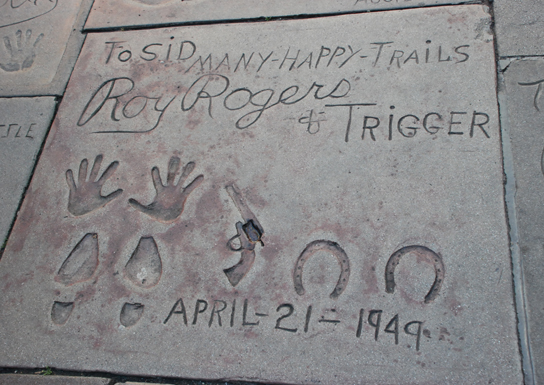
Roy Rogers died of congestive heart failure on July 6, 1998, in Apple Valley, California, where he had resided since the mid-1960s. Dale Evans died three years later. They are buried together at Sunset Hills Memorial Park in Apple Valley.

“I tell you what the world could use
Is a Roy Rogers and a Trigger too…
The world could use a cowboy right about now” – The World Could Use a Cowboy (David Martin)
Few people in the modern era have had the widespread cultural influence of Roy Rogers. I watched reruns of his television show when I was a boy and had a holstered cap gun that I wore because I wanted to be like Roy. I remember watching “stills” from his television show through my View-Master, and Roy & Dale were always a highlight of the annual Tournament of Roses Parade, where they appeared immaculately turned-out in full Western regalia.
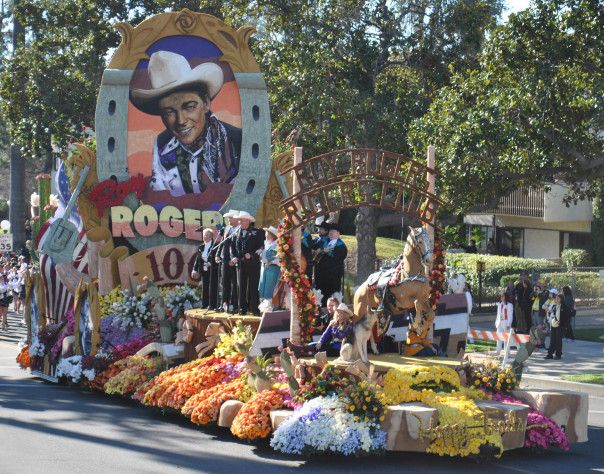
“Stealin’ the young girls’ hearts
Just like Gene and Roy
Singin’ those campfire songs
Woah, I should’ve been a cowboy” – Should’ve Been a Cowboy (Toby Keith)
From the song lyrics that I’ve shared excerpts of, Roy Rogers plainly had a profound influence on many, and I believe it’s safe to say that we will never again see an entertainment personality with a similarly impactful career.
Thanks, Roy!

“Who cares about the clouds when we’re together?
Just sing a song, and bring the sunny weather,
Happy trails to you
Until we meet again” – Happy Trails (Dale Evans) © Sony/ATV Music
Sources:
https://en.wikipedia.org/wiki/Happy_Trails_(song)
https://en.wikipedia.org/wiki/Roy_Rogers
All photos sourced through internet searches, none belong to the author
